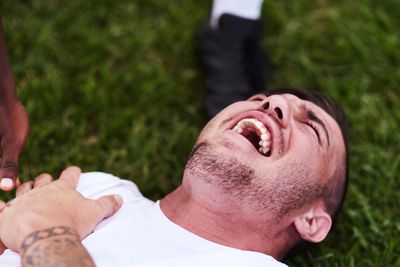AC Joint Sprain (Shoulder Separation) Recovery: Dry Needling
Discover the Healing Power of Acupuncture for AC ligament sprains in Eugene, Oregon
Background
Acromioclavicular (AC) ligament sprains—often called AC joint sprains or “shoulder separations”—are common in contact sports, cycling crashes, falls, and repetitive overhead activity. Early care typically includes rest, ice, NSAIDs, and physical therapy, but ongoing pain and loss of shoulder function push many athletes to seek adjunctive options such as dry needling and sports acupuncture.
Why look beyond standard care?
Even when ligaments heal, secondary muscular problems around the AC complex can perpetuate pain and limit return to sport. Dysfunction in the deltoid, upper trapezius, supraspinatus, and infraspinatus frequently accompanies AC injury and becomes a key driver of symptoms—an important therapeutic target for needling-based care.
Dry needling (DN) basics.
DN uses thin, solid filiform needles to release myofascial trigger points—hyperirritable knots in taut muscle bands—to reduce pain, restore mobility, and normalize neuromuscular function. Unlike traditional acupuncture, DN is framed in Western orthopedic and neurophysiologic terms, though in practice it is often delivered by sports acupuncturists who integrate both models.
Evidence snapshot for shoulder & AC‑related pain:
- Systematic review/meta‑analysis: Kietrys et al. (2021) found DN produced statistically significant improvements in shoulder pain and function versus sham or standard therapy across varied shoulder disorders—findings relevant where AC involvement contributes to symptoms.
- Randomized controlled trial: In athletes with shoulder instability (many showing AC involvement), DN accelerated pain reduction and range‑of‑motion gains compared with controls.
Clinical relevance: Although the RCT did not isolate AC sprains, biomechanical overlap supports cautious extrapolation to AC rehabilitation.
Case evidence: A CrossFit athlete with chronic AC joint pain unresponsive to injection and manual therapy reported ~90% improvement after targeted DN to upper trapezius, supraspinatus, and anterior deltoid.
- Acupuncture comparison: A comparative review of dry needling and acupuncture for shoulder pain underscores the broader role of needle‑based interventions in shoulder rehabilitation, supporting inclusion of sports acupuncture alongside DN.
Proposed mechanisms: By reducing peripheral nociceptive drive, normalizing muscle activation, improving blood flow, and modulating central pain processing, DN may unload the injured AC complex indirectly and improve shoulder mechanics; similar neuromodulatory benefits are pursued in sports acupuncture.
Clinical use guidelines: Best results occur when DN (and acupuncture) complement—not replace—rehab fundamentals. Ideal candidates show subacute/chronic AC pain, palpable trigger points in shoulder girdle musculature, and stalled progress in conventional care; integrate with exercise, manual therapy, and neuromuscular retraining for durable outcomes.
Takeaway: Evidence remains emerging but promising—dry needling and sports acupuncture appear to be useful adjuncts for selected AC ligament shoulder sprains when delivered by skilled providers within a comprehensive rehabilitation plan.
Serving athletes, active adults, and rehab patients in Eugene, Oregon.
